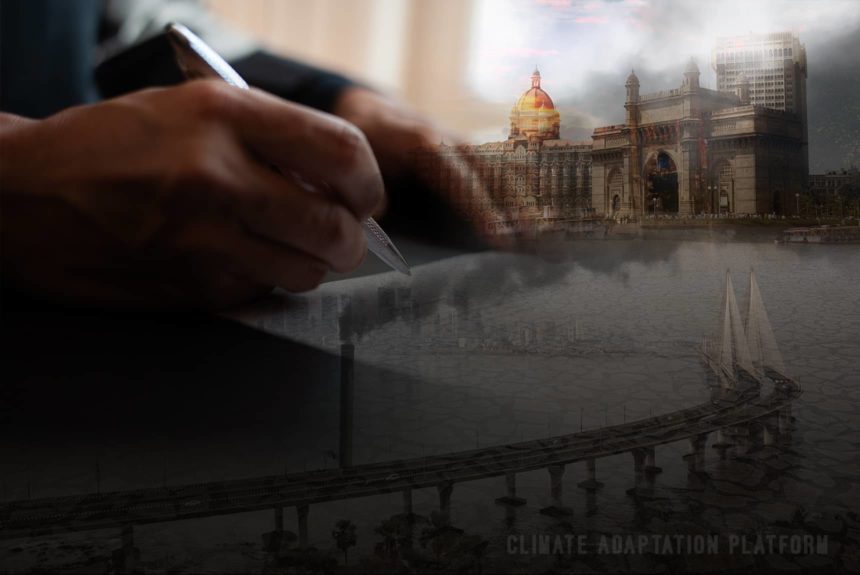Mumbai, India, is drafting an ambitious Climate Adaptation Plan, launched in August 2021. The city hopes to have the plan ready for the United Nations, Climate change COP26 conference by November.
The Climate Adaptation Plan is the city’s response to the growing climate vulnerability of the city, especially to flooding and rising temperature, the cities top two major climate change threats, and also prepare for the city’s climate future as projected by the 2021 Intergovernmental Panel on Climate Change (IPCC) report.
Mumbai’s climate vulnerabilities
The IPCC report warns that 12 Indian coastal cities, including Mumbai, are expected to experience sea-level rise (SLR) of up to 0.3 meters over the next 30 years. Meanwhile, a 2020 report from McKinsey India projects a 25% increase in flash flood intensity and a half-meter rise in sea levels by 2050, affecting up to 3 million people living within 1 kilometre of the coastline.
The Indian Meteorological Department (IMD) has observed a steady rise in air temperatures over the last 50 years, along with increases in nighttime temperatures, faster warming during the winter months, and an increase in extreme heat days or temperatures between 32 and 42 degrees Celsius. Increases in temperatures also adversely affect the human health and productivity of Mumbai residents.
Warming trends in Mumbai are partly due to the increased concretisation of pavements, higher housing density, and a lack of green cover, resulting in a 1-degree Celsius increase in temperatures over the last 14 years.
There has also been a steady increase in extreme rainfall over the past decade.
The plan will encompass climate adaptation and mitigation strategies in six key areas: sustainable waste management, urban greening and biodiversity, urban flooding and water resource management, building energy efficiency, air quality, and sustainable mobility.
GHG emissions
In 2019, the city’s GHG emissions were 34.3 million tonnes, of which 71% comes from the energy sector, which is 95% powered by coal, 24% from transport, and 5% from solid waste management. The city plans to increase the share of renewable energy on its power grid to reduce emissions.
Iqbal Chahal, commissioner of The Brihanmumbai Municipal Corporation (BMC), the office tasked to prepare the Mumbai Climate Action Plan (MCAP), says that it would be “very dangerous” for the city to ignore nature’s signals and neglect climate planning: “It cannot be a number two priority.”
Nikhil Anand and Lalitha Kamath, both urban planners and anthropologists of urban infrastructure and environment, made five recommendations for the MCAP to be successful. They presented these recommendations in an article published in The Indian Express, titled “Mumbai’s climate adaptation plan must consider all citizens, especially the most vulnerable.”
First, climate change planning and climate adaptation should protect all citizens and the entire urban environment, not just a privileged few.
Second, technocratic solutions in one area should be considered in all sectors to understand their impacts. For example, the expansion of EVs should also consider decarbonising the city and state’s energy infrastructure, which runs primarily on coal.
Third, the Municipal Corporation of Greater Mumbai should “build an effective process for ongoing climate change planning rather than focus only on creating the fixed product of a climate plan”. This is designed to address the diverse climate vulnerabilities in urban areas and socio-economic groups, allowing for flexibility in coping with the “evolving and unpredictable nature of the crisis we face.”
Fourth, the formulation of the plan should be a democratic process that involves coordination and input from multiple government agencies, which the city has benefited from in the past.
Fifth and most critically, the plan should not discriminate or disadvantage the city’s informal settlers. The authors cited a response to flooding of the Mithi River in 2005, when slum-dwellers on the other side of the river were threatened with displacement and eviction, while powerful businesses in the same area were protected.
Sources:
Anand, N. & Kamath, L. (2021, September 11). Mumbai’s climate adaptation plan must consider all citizens, especially the most vulnerable. The Indian Express. Retrieved from https://indianexpress.com/article/opinion/columns/mumbais-climate-adaptation-plan-must-consider-all-citizens-especially-the-most-vulnerable-7499760/
Singh, L. (2021, August 31). Mumbai Climate Action Plan: What is it, and why does the city need one? The Indian Express. Retrieved from https://indianexpress.com/article/explained/mumbai-climate-action-plan-explained-7479703/



Leave a Reply